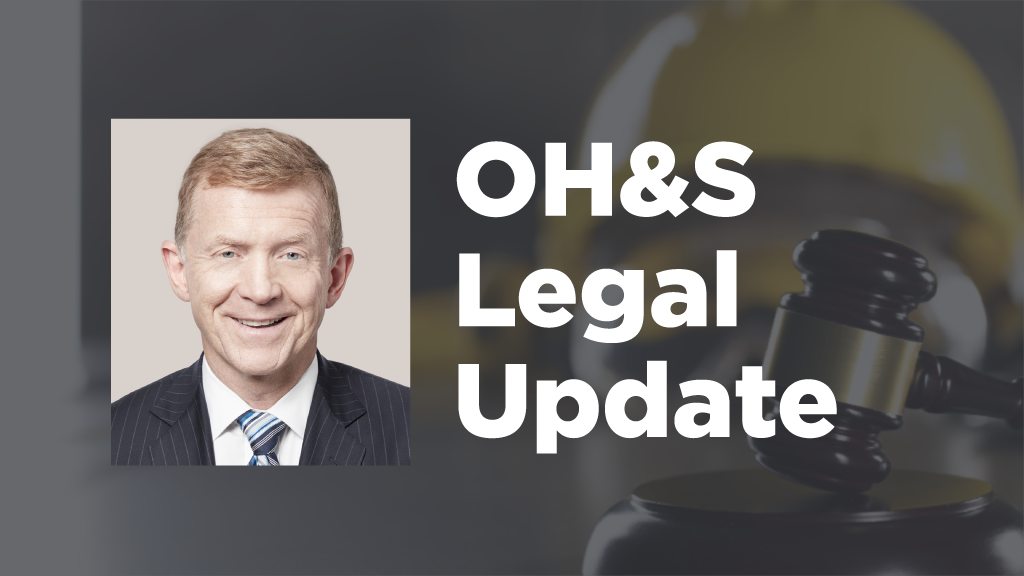This is the first of a recurring column by leading occupational health and safety lawyer Norm Keith on occupational health and safety matters in Ontario and beyond. The column will be featured monthly.
The Ministry of Labour, Training and Skills Development (MLTSD) passed another set of changes to Occupational Health and Safety (OHS) law in Ontario.
The legal changes place a higher regulatory burden and enforcement risk on employers while potentially undermining trust and co-operation at projects.
Information gathered by employer’s safety representatives and committees may now be “brown enveloped” to MLTSD investigators and used against employers and supervisors in investigations and enforcement action by the MLTSD.
There was no known, meaningful consultation with the construction industry before passing these decidedly anti-business changes to the OHS law; they were done very quietly at the busy year end for most contractors.
Bill 13, the Supporting People and Business Act, 2021, received royal assent on Dec. 2, 2021. The other anti-business legislation, Bill 27, was passed by the MLTSD and was another recent legal change that promotes a workers right to disconnect from work and prohibits employers from including non-competition requirements in employment contracts.
Bill 13 amends several provincial acts including the Occupational Health and Safety Act (OHSA). A summary of the specific changes are as follows:
Section 8
Context: Section 8 of the OHSA sets out the role and responsibilities of a health and safety representative. In the instance of a death or critical illness at the workplace, the worker representative may inspect the accident site under s.51(2) and report the written findings to a director, under s.8(14).
Amendment: Section 8 has been amended to add s.8(14.1) which states that the health and safety representative may share with a MLTSD inspector, any of the findings made under s.8(14).
Employer concerns: The investigation of a workplace incident by a worker health and safety representative may now be legally “shared” with a MLTSD investigator and used against the employer as evidence of non-compliance to convict an employer when charged under the OHSA. This will likely cause suspicions, divisions and undermine the Internal Responsibility System (IRS), the foundation of the OHSA.
Section 9
Context: Section 9 of the OHSA sets out the roles and responsibilities of a joint health and safety committee in the workplace. Currently, s.9(31) states the members of a committee shall designate one or more members to investigate cases where a worker is killed or critically injured at a workplace, and such members may inspect the incident site under s.51(2) and shall report the findings to a director.
Amendment: Section 9 has been amended to add s.9(31.1), which states that the investigating member may share with a MLTSD inspector any of the findings made under s.9(31).
Employer concerns: Similar to the abovementioned concerns, a Joint Health and Safety Committee (JHSC) representative may share internal investigation information with a MLTSD investigator and it may be used as evidence against the employer when facing charges under the OHSA. Not only will this cause suspicions, divisions and undermine the IRS in the workplace, it also compels employers to get early legal advice, assert claims of privilege and Charter rights to protect the fair trial rights of the construction community.
Section 25(4)
Context: Previously under s. 25(4), the requirement to prepare and review an annual written OHS policy and develop and maintain that policy did not apply to smaller workplaces of five or less.
Amendment: s. 25(4) has been amended to state that this is still not a requirement for workplaces of five or less “unless otherwise prescribed.” In other words, workplaces of five or less may need to meet this requirement if prescribed by regulations.
Employer concerns: Small employers, or workplaces with five employees or less, may now be given the heavy regulatory burden of developing a written OHS policy and program and reviewing them every year. No background information or public study was released to justify this new regulatory burden on small contractors and projects are being targeted by this legislative change.
Section 52(1)
Context: Section 52(1) states that if a person is disabled from performing his or her usual work or requires medical attention due to an accident, explosion etc. at the workplace, but is neither killed or critically injured, the employer must give written notice of the occurrence within four days to the: (1) committee, health and safety representative and the trade union, or (2) the director, if an inspector requires the notification of the director.
Amendment: Section 55.4 has been added to the OHSA which states that for the purposes of s.52(1), an inspector may order an employer to give written notice to a director during such period as may be specified by the inspector.
Employer concerns: This is a “take back” amendment from the OHSA that previously relieved contractors from the regulatory burden of reporting non-critical incidents to the MLTSD. These changes give individual MLTSD investigators unfettered discretion to issue such orders under this new provision. The MLTSD exercises very little supervision, oversight and quality control of the activities of their investigators at construction projects. This new power is open to misuse and abuse with very little recourse by employers, other than to appeal such orders under s. 61 of the OHSA.
The government’s justification of these changes in the provincial parliament in third reading was: “This proposal would help support businesses and enhance the role of workplace parties following injuries at work by modernizing rules, obligations and processes.”
Nothing could be further from the truth.
Construction industry members will need to review and adjust practices to mitigate the further legal risk associated with these changes.
For more information please contact Norm Keith, 416-476-2002 or nkeith@kpmg.ca. Keith is a partner at KPMG in Canada and is one of the leading occupational health and safety lawyers in the country.
You can also send OH&S Legal Update column ideas or comments to editor@dailycommercialnews.com










Recent Comments